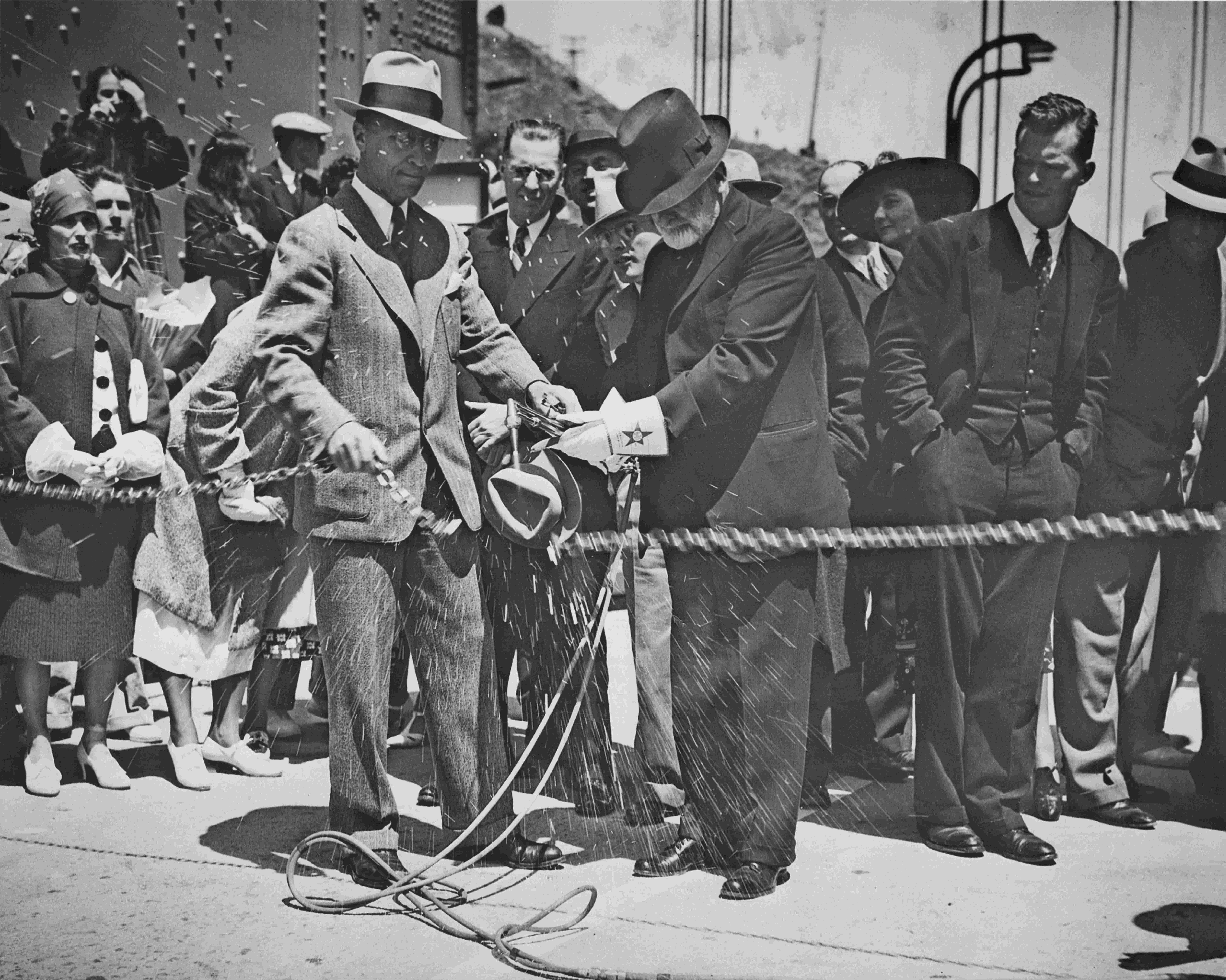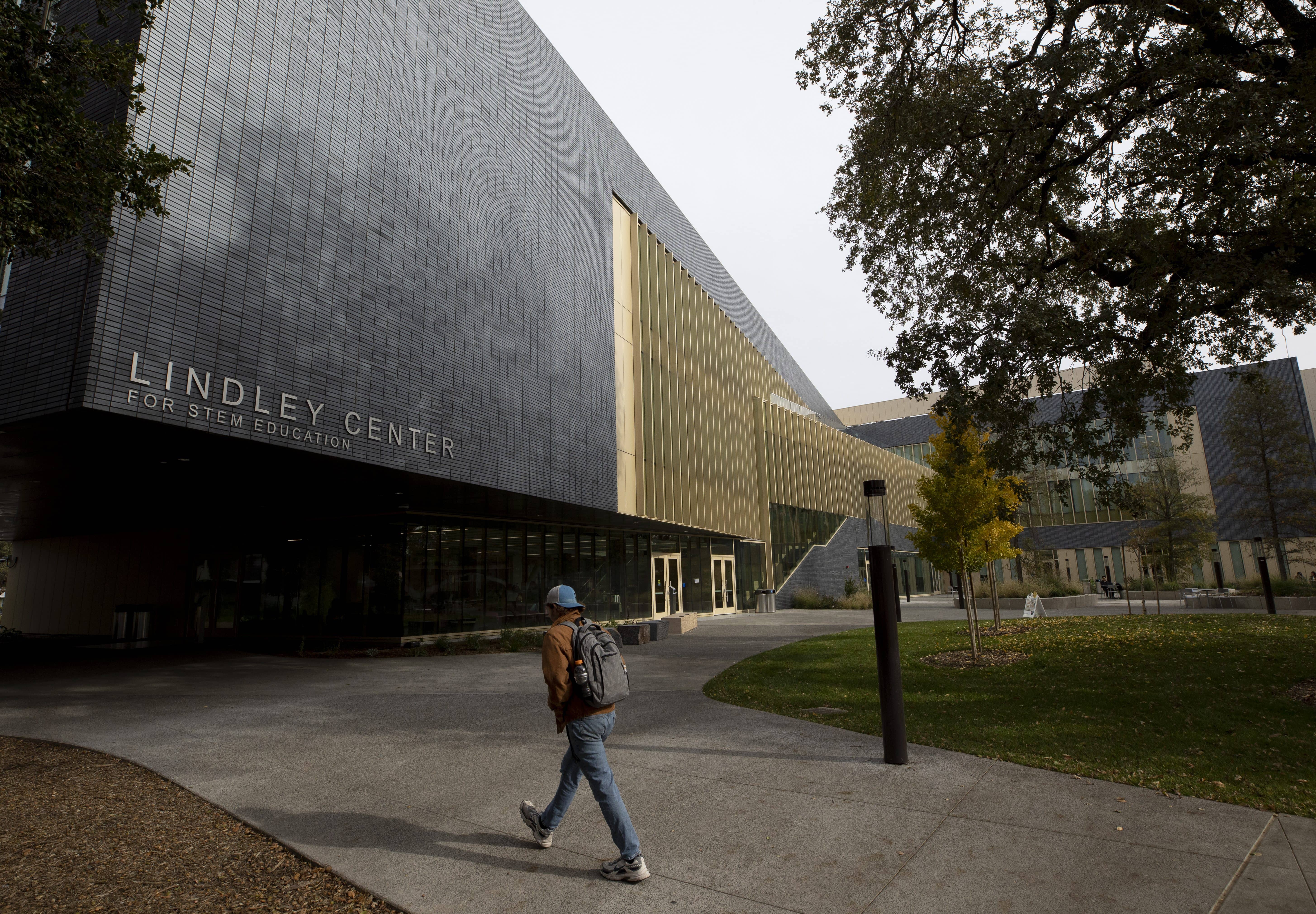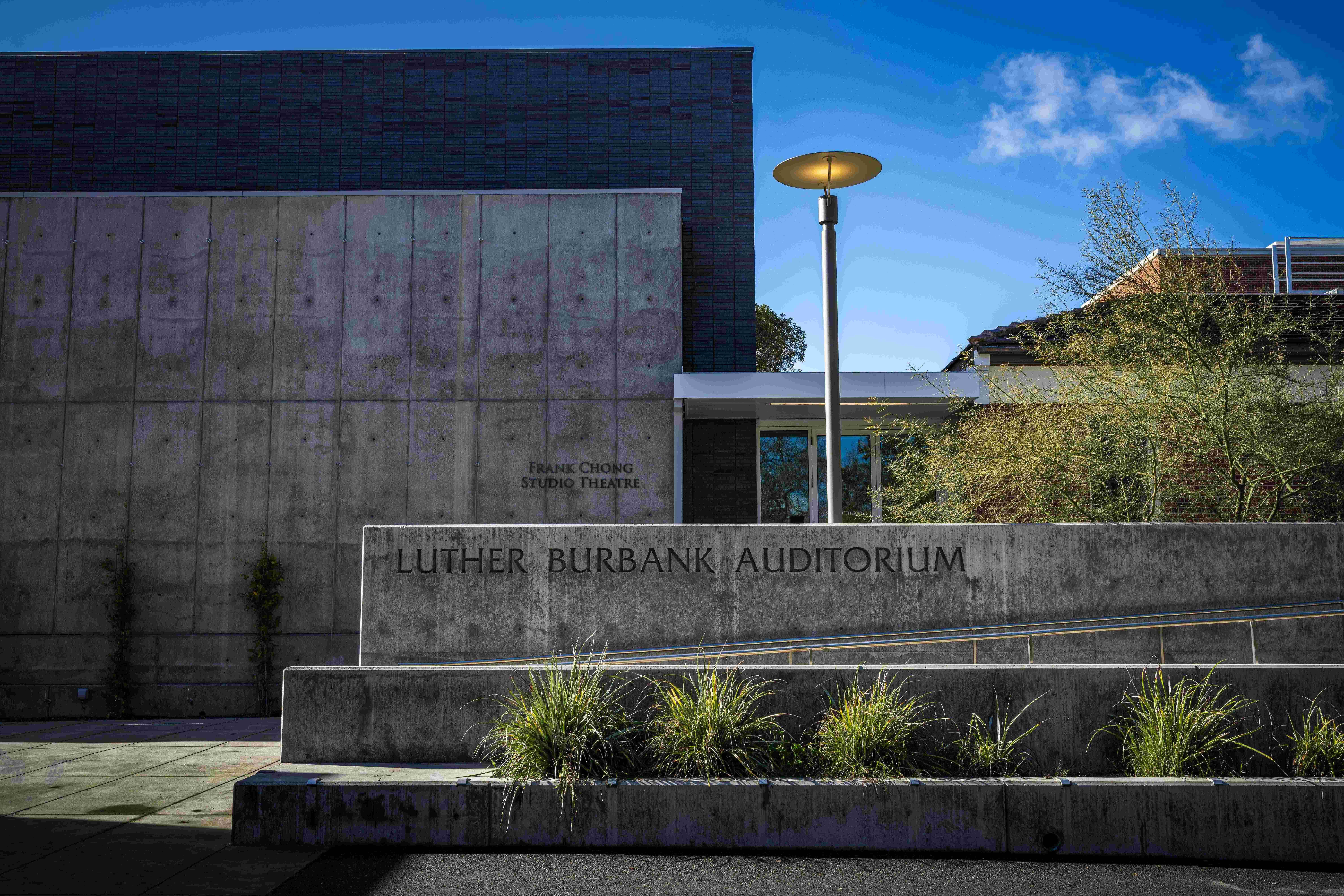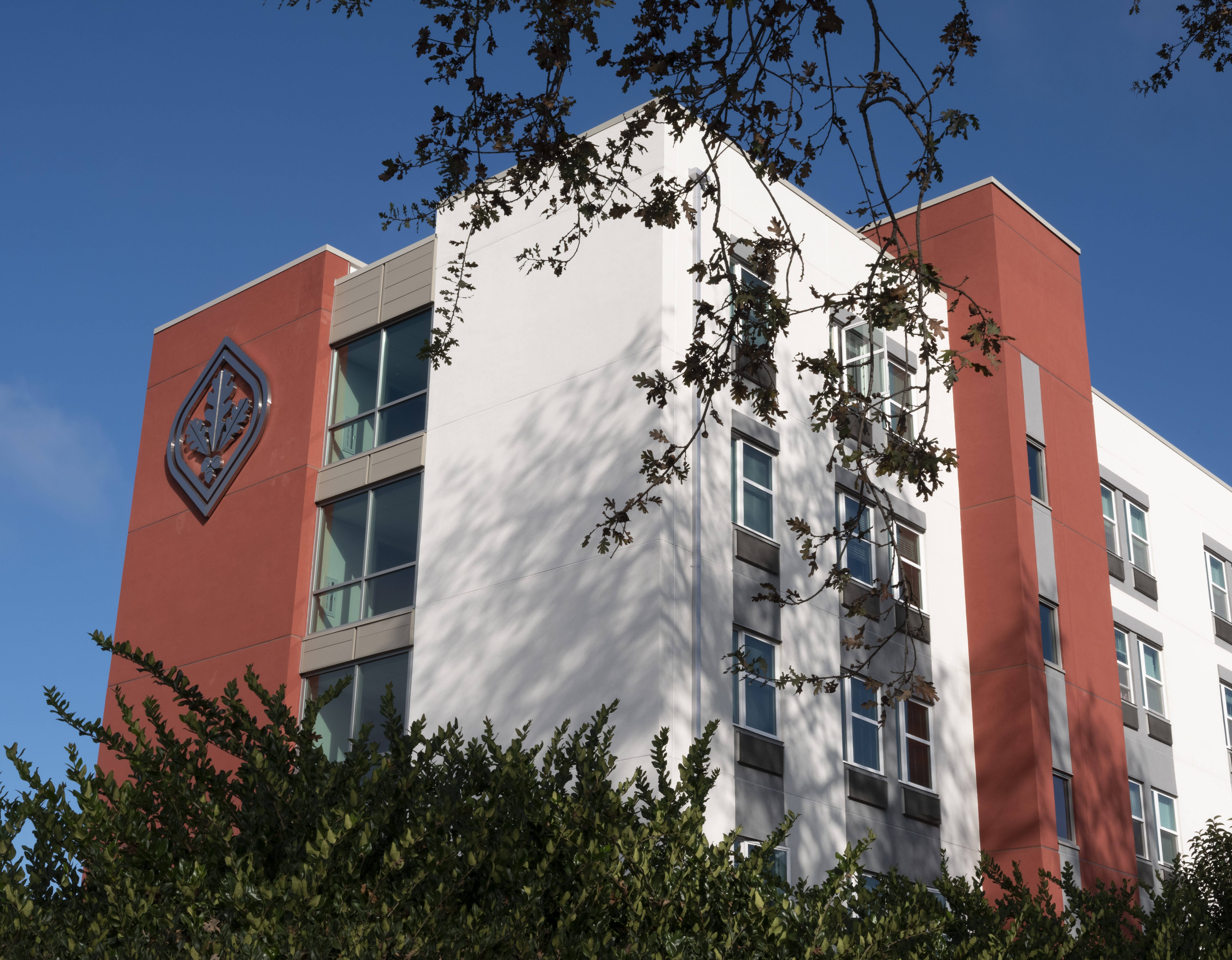Andrew Simmalaychanh will never forget his high school graduation day, for more than one reason.
On June 3, 2023, he received his diploma—and official notification that he had been awarded a Doyle Trust Scholarship to Santa Rosa Junior College.
“I was elated,” the first-generation college student, now 19, says. “It meant that an institution thought I was valuable, my education was valuable, my time and my goals were valuable.”
The financial assistance has been critically important, says Simmalaychanh, who is active in student government, works at Target part-time and has a 3.8 grade point average.
Simmalaychanh is one of over 150,000 Santa Rosa Junior College students whose college doors were opened by Doyle Trust Scholarships since 1950.

How the scholarships came about is a story of one couple’s dedication and commitment to their community—the story of long-ago Exchange Bank president Frank Doyle and his wife Polly O’Meara Doyle, who left their indelible mark upon the North Bay in the early 20th century.
In 1921, the Doyles’ son, Frankie, tragically died at age 13 from heart failure during what was thought to be a routine tonsillectomy; the couple never had an opportunity to put their only child through college. Instead, the Doyles would go on to provide college scholarships for thousands of students like Simmalaychanh, to the tune of $110 million.
Upon his death at age 85 in 1948, Frank Doyle willed his 50.4% interest in the bank to a perpetual trust, commonly known as the Doyle Trust, with a mission to assist in the education of “worthy young men and women attending Santa Rosa Junior College.” The trust puts the dividends it receives from its ownership in the stock of Exchange Bank toward Santa Rosa Junior College to fund the Doyle Scholarships.
“He loved the bank and he loved the JC,” says Bill Schrader, chair of the board of Exchange Bank.
“He found a way to put his money in a trust that allowed the bank to remain independent, free from outside interference, and [stipulated that] any dividends that would be received from his interest in the bank would go largely to the trustees of the Santa Rosa Junior College District,” Schrader says. [The trust also maintains the Doyle Community Park in east Santa Rosa, dedicated in 1922 to the memory of the Doyles’ son.]

The board chair noted that the language of the trust dictates that the scholarships would go to “worthy men and women.”
Shrader says, “That was, frankly, very progressive. As unfair as it was, in the 1940s, women were not expected to go to college. The Doyles had the foresight to enable both men and women to attend junior college by helping them meet the expenses of obtaining an education.”
It all started in 1863 when Frank Doyle was born in Petaluma, the son of Manville “Matt” Doyle, the founder of Exchange Bank in Santa Rosa. Frank followed in his father’s footsteps, working at the bank and eventually succeeding his father as president.
During his lifetime, Frank was a driving force benefiting not only Sonoma County, but the entire region. Among other things, he was described by many as “the father of the Golden Gate Bridge.”
In 1923 he brought together a group of civic leaders in a meeting of the “Bridging the Golden Gate Association,” and continued to support efforts to build a bridge linking San Francisco with the North Bay. Fourteen years later, he was the first civilian to drive across the bridge, and a photo of the then-bank president driving a black Dodge coupe in the opening ceremony hangs on the wall in the bank’s downtown Santa Rosa office. Doyle Drive, the original thoroughfare leading from the bridge into San Francisco, was named in his honor.
Doyle also was a founder of the Redwood Empire Association, a president of the Santa Rosa Chamber of Commerce and one of the founders, with Grace and Ernest L. Finley, of the Sonoma County Fair.
“He was a visionary leader,” Schrader says. “After the devastating earthquake of 1906, he led an effort as a leader of the chamber to rebuild Santa Rosa and convinced some of the merchants to give up their storefronts so they could widen the streets for the emergence of the automobile.”

At the time, the automobile was viewed by many with something akin to the mistrust now accorded to cryptocurrency—as nothing more than a risky fad. It was not until the 1920s that cars began to become widely adopted.
It’s important to note that Polly O’Meara Doyle also made major contributions to the county and the region. She was one of 14 women with the Federated Home and School Association who in 1917 came together and recommended the formation of a junior college in Santa Rosa. (The recommendation was approved three days later.)
The Doyles’ support of the junior college didn’t end with Frank’s death in 1948. Two years later, the first distributions of what is often described as Frank’s most important accomplishment—the Doyle Scholarships—went into effect.
In accordance with Frank Doyle’s wishes, three trustees administer the fund. The current trustees are Bill Reinking, a retired former president of the bank; Jim Ryan, a current director of the bank; and Schrader.
The 2024-2025 dividends delivered by the Doyle Trust to the Santa Rosa Junior College Foundation totaled $4.6 million. The trust owns 864,264 shares of the common stock as of December 2024.
“We’d love to offer scholarships to every one of our qualifying high school seniors. We want every single high school senior to know this is available to them,” says Rachael Cutcher, the junior college’s director of student financial services.

There is still time to apply for a scholarship, Cutcher says. While it’s not a hard deadline, the optimal cutoff is May 24, 2025. However, qualified students can still apply for and possibly obtain a scholarship even after school starts in August, she says.
Qualifications include having an unweighted final high school GPA of 2.75 or greater, if you are a high school graduate from the class of 2025. Also, scholarships known as Doyle Trustee Awards are available to worthy students with GPAs of 2.0 to 2.749. These awards are for students whose challenges and struggles impeded their academic success in high school.
More information is available through the school’s website, doyle.santarosa.edu/doyle-scholarships.
Depending on several factors, the scholarship is generally $1,200 per year for full-time students. For those with different courseloads, the amount is prorated.
Scholarship recipients have gone on to universities including the University of California at Berkeley, Stanford and Cornell universities and UC Davis, Cutcher says. “They go everywhere.”
Simmalaychanh is leaving Santa Rosa Junior College at the end of the spring semester. He has applied to several universities, with UC Irvine his top choice.
Long-ago scholarship recipient Ramsay Brown graduated from Santa Rosa Junior College in 2005 and went to San Francisco State University.
“The Doyle Trust Scholarship made it possible for me to attend Santa Rosa Junior College,” he says.
Brown graduated from SF State with an MBA in 2010. In early 2011, he joined Bank of Marin, leaving in 2019 to work at Exchange Bank—the source of the scholarship that got him started over a decade earlier. He is currently a vice-president and commercial relationship manager.

Brown is just one of many Sonoma County business and community leaders who received the scholarship, Cutcher says.
Doyle Scholars pursue a variety of careers—from medical doctors, lawyers, researchers, teachers, nurses, firefighters, police officers, “anything offered at the college,” she says.
“When we have high school graduation ceremonies, often, the people who have received scholarships in previous years are asked to stand, and half the audience stands up,” Cutcher says.
Schrader says, “Frank Doyle didn’t want us to merely participate in community events. He wanted us to be leaders, to use our influence to make a difference.”
He adds, “At the end of our lives, that’s what it all amounts to—what difference did we make on this earth? For Frank Doyle, leadership wasn’t a noun; it was a verb—a call to action.”


